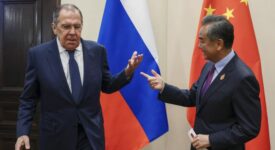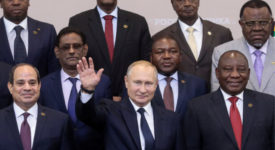Post-Soviet Russia has gone a long way from the rigid Soviet-time Gosplan targets to its current system of indicative strategic plans, which encompass the economy at large as well as different sectoral strategies. Russia’s Energy Strategy must have a prominent place in this set, owing to the decisive role that energy plays in the country’s gross domestic product (GDP), budget and exports. Yet, paradoxically, the latest version of this document, “Russia’s Energy Strategy to 2035” (ES-2035 hereinafter), which Russia’s Energy Ministry developed and submitted to the Russian government in 2015, has not been approved after more than four years. The previous version, “Russia’s Energy Strategy to 2030”, which became law in 2009, further stipulates that the energy strategy must be updated every five years.
The absence of an up-to-date strategy thus creates a legal loophole in the regulatory framework that governs Russia’s energy sector. In early October 2019, Russia’s Ministry of Energy updated the text of ES-2035 and submitted it to the government. It is expected that the review of the document will proceed quickly, to allow Russia to finally approve the new ES-2035. The impasse over the bureaucratic procedure might be over, but the relevance and usefulness of ES-2035 remain questionable. This situation is related to a continuing lack of consensus, between and among key government and industry players, about the basic direction of energy policy in the years ahead. In broader terms, these contradictions reflect a debate over what path of economic development Russia should choose, and what role the energy sector should play in this. The “great divide” is about a choice between returning to state control and allowing market forces to work.
Unfortunately, the international sanctions against Russia have reinforced internal trends toward a greater role of the state in the Russian economy at the expense of openness and market behavior. The problem is being exacerbated by the tectonic structural shifts in the global oil and gas markets, which have greatly increased risks and uncertainties, and made many recent forecasts and outlooks obsolete. It is no surprise, therefore, that the Russian government policies in 2015-2018 have taken the form of short-term reactive adaptation to market developments rather than long-term proactive strategic behavior.
At the same time, some key energy policy decisions not envisioned either by the previous energy strategies or the latest draft have been taken in the past five years. Among the most important of these, the deal between Russia and the Organization of the Petroleum Exporting Countries (OPEC) on regulating global oil supply has become a new policy and a new challenge for Russia’s oil industry. Russia, traditionally an oil price-taker, decided to change course and regulate its oil supply to influence global oil prices. This further strengthens the role of the state in setting targets for Russia’s oil output.
On the natural gas side, Russia’s active support of Novatek’s LNG projects have effectively become an export strategy of promoting two national champions: Gazprom as a pipeline gas exporter, and Novatek as an LNG exporter. This definitely means a new strategy for gas exports, though ES-2035 does not make any focus on it. The international sanctions against Russia have led to a drive for self-sufficiency and import substitution with regard to oil and gas technologies and equipment. This is another example of a new strategic development that Russia’s new energy strategy needs to address.
The draft ES-2035 does not yet constitute a reliable guide to the future evolution of Russia’s energy sectors. The Russian government has so far sidestepped or delayed the difficult task of formulating policies on several crucial but politically sensitive energy issues: the future fiscal policies for oil and gas that are needed to incentivize output and prevent production declines; industrial and technological policy; the choice of the future model for Russia’s gas industry and whether it is going to develop under continued state regulation or in the market environment; climate and decarbonization policy, given that Russia has finally joined Paris Agreement and the strategy to promote (or not) renewables and other technologies of energy transition; and the future of competition in the wholesale and retail power markets.
Once approved (expected before the end of 2019), ES-2035 will become the best available indication of Russian energy policymakers’ plans. It therefore merits careful consideration. However, it is already clear that it is unlikely to address several fundamental issues: Firstly, how Russia with its huge dependency on hydrocarbon exports plans to compete in the global energy market, which is undergoing profound transformation. Secondly, whether the country wants to join the energy transition pattern, supporting renewables, energy efficiency and other new technologies, or prefers to maintain the traditional reliance on fossil fuels and on cheaper old technologies. Thirdly, whether it is ready to increase competition in the energy sector and allow markets to rule, or plans to go for further centralization and state control in the sector.
One cannot reasonably expect a strategy document to run ahead of the decision-makers, who remain paralyzed over these fundamental issues. Under any scenario, Russia is going to remain an energy powerhouse and one of the largest world energy exporters. But the exact shape of this future is still unknown.
‘Russia’s Energy Strategy-2035: Struggling to Remain Relevant‘ – Report by Tatiana Mitrova and Vitaly Yermakov – Institut français des relations internationales / IFRI.
Article Categories:
THINK-TANK






